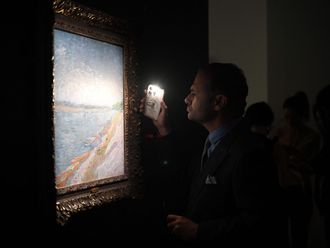
Dubai: Unesco has named Al Ain as a world heritage site because of its oases, its traditional falaj irrigation system and its historical and archaeological importance.
The National Council for Tourism and Antiquities (NCTA) and the Abu Dhabi Authority for Culture and Heritage (ADACH), have announced the registration of Al Ain as the first Emirati site on the World Heritage List, according to a Wam report.
The oasis city was registered as a heritage site during the Unesco World Heritage Committee in Paris. The UN body seeks to encourage countries to identify their cultural and natural heritage sites and protect them as per an international convention.
Traditional market
Mohammad Khalaf Al Mazroui, Director-General of ADACH, said work is underway to preserve several fortresses and historical places, including the Jahili mosque and fortress, and Bin Hadi House in the Hili Oasis, along with dozens of other archaeological sites and historical buildings.
He said work is also underway to revive the original use of the buildings and to re-dedicate them to their original purposes (such as the old traditional market in Al Qattarah).
Al Mazroui underlined that Al Ain residents maintain old social customs and examples of these include the wedding celebrations, Bedouin hospitality, falconry and camel races.
"The rapid development of this nation does not prevent the preservation of its heritage," the ADACH director-general said.
During the Unesco meetings, the World Heritage List committee members discussed 169 cases of protecting property, including 34 sites that were on the World Heritage List, as they faced danger due to various serious threats.
Engineering feat
Al Ain was considered to be on the World Heritage Sites list because of:
- The ‘falaj' irrigation system is seen as an engineering feat. It is not only significant as a method of transporting water, but also allows for settlements to develop.
- The Hili landscape, a fortified settlement known for its unique architecture and burial customs.
- Jebel Hafeet, with its ancient desert encampments, its 4th Millennium funeraries and its oases settlements.
- The various oases, with their mosques, farms and other historic buildings, represent the cradle of Emirati Bedouin culture.
- The thriving practice of falconry, and camel trading and racing.
- The red desert sand dunes, the flora and fauna of Jebel Hafeet. Some of the fossils found here date back to the Cretaceous period. The mountainous range is believed to have been formed some 25 million years ago.
- Studies indicate that Jebel Hafeet is habitat to around 118 species of plants, 18 species of mammals, 140 species of birds and over 10 species of reptiles.













